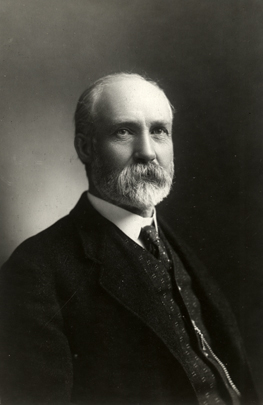Arthur Philemon Coleman facts for kids
Quick facts for kids
Arthur Philemon Coleman
|
|
|---|---|
 |
|
| Born | April 4, 1852 |
| Died | February 26, 1939 (aged 86) |
| Nationality | Canadian |
| Alma mater | Victoria College, University of Breslau |
| Awards |
|
| Scientific career | |
| Fields | Geology |
Arthur Philemon Coleman (born April 4, 1852 – died February 26, 1939) was an important Canadian geologist and professor. A geologist is a scientist who studies the Earth, including its rocks, mountains, and how it has changed over millions of years. Coleman spent his life exploring and learning about Canada's land, especially its ancient ice ages.
Contents
A Life of Learning and Discovery
Arthur Coleman was born in Lachute, Quebec. He loved to learn and studied at Victoria College in Cobourg, Ontario. He earned his first degree in 1876 and a master's degree in 1880. Later, he traveled to Germany and received his Ph.D. from the University of Breslau in 1881.
Becoming a Professor
After finishing his studies, Coleman became a professor. In 1882, he joined Victoria College to teach about geology and natural history. He later taught geology at the School of Practical Science in Toronto from 1891 to 1901. From 1901 to 1922, he was a professor at the famous University of Toronto. He even became the Dean of the Faculty of Arts for a few years, helping to lead the university.
Exploring Ontario's Mines
Besides teaching, Coleman also worked for the government of Ontario. From 1893 to 1909, and again from 1931 to 1934, he was a geologist for the Bureau of Mines. This meant he helped explore and understand the land to find important resources like minerals.
Discovering Ancient Ice Ages
One of Coleman's most famous discoveries was about ice ages. In 1907, he studied rocks near Lake Huron and found evidence of a very old "lower Huronian ice age." This helped scientists understand that Earth has gone through many periods of being covered in ice, long before the last major ice age.
Mountain Adventures
Arthur Coleman was also an adventurous explorer. He loved the Canadian Rockies and made eight trips to explore them. In 1884, he was the first person to climb Castle Mountain. In 1907, he was the first white person to try climbing Mount Robson, one of the highest peaks in the Canadian Rockies. He even spent time looking for the mythical "giants of Hooker and Brown," which were thought to be very tall mountains.
Awards and Recognition
Coleman's important work was recognized by many scientific groups.
- In 1900, he became a Fellow of the Royal Society of Canada and was its President in 1921.
- He received the Murchison Medal from the Geological Society of London in 1910.
- In 1928, he was awarded the Flavelle Medal by the Royal Society of Canada.
- He was also elected President of the Royal Canadian Institute in 1902.
- In 1910, he became a Fellow of the Royal Society, a very prestigious honor.
- He was President of the Geological Society of America in 1915.
- In 1929, he was made an Honorary Vice-President of the Royal Canadian Geographical Society.
- In 1936, he received the Penrose Medal, another top award from The Geological Society of America.
Books by Arthur Coleman
Coleman also wrote several books about his geological discoveries:
- Reports on the Economic Geology of Ontario (1903)
- Lake Ojibway; Last of the Great Glacial Lakes (1909)
- The Canadian Rockies: New and Old Trails (1911)
- Ice Ages, Recent and Ancient (1926)
- The Last Million Years (1941) (published after he passed away)
Legacy
Arthur Coleman's contributions to geology are remembered in several ways.
- Mount Coleman and Coleman Glacier in Banff National Park are named in his honor.
- Lake Coleman, an ancient lake that existed with a higher water level in the same area as Lake Ontario, is also named after him. This lake was formed by the melting of huge ice sheets, just like Lake Iroquois and Lake Scarborough.

